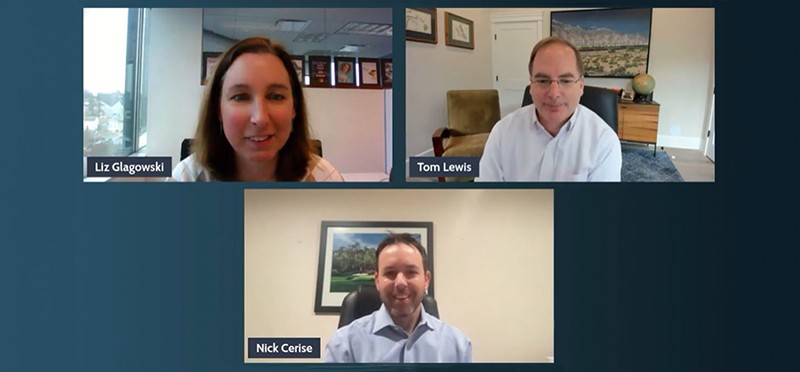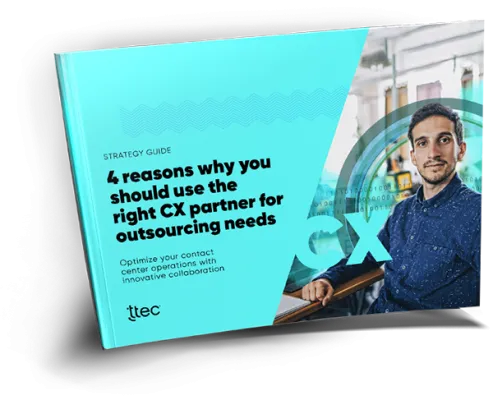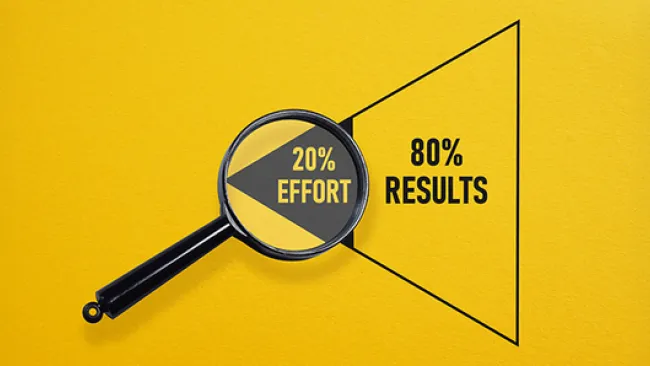If 2023 was a year of revelation, zeal, and anything-is-possible hopes for artificial intelligence’s potential, 2024 is shaping up as a year of action.
Twelve months of toe-dipping and healthy scrutiny provided the launchpad to make some real moves with AI in the contact centre, according to two customer experience experts on a recent webinar. The growing role of AI in customer interactions is just one of the major 2024 CX trends examined by TTEC’s Nick Cerise, chief marketing officer, and Tom Lewis, global leader, CX consulting, analytics and AI, TTEC Digital.
Cerise and Lewis joined participants of TTEC’s “Unveiling CX game changers for 2024” LinkedIn Live webinar recently to examine opportunities — and challenges — uncovered in the new CX Trends 2024 report that reveals four megatrends shaping CX and EX in the year ahead.
Subpar CX gives rise to human-AI balance
Now that they’ve had some degree of exposure to AI in customer support, and not all of it delightful, some consumers are thinking: Meh. Maybe I’d rather talk to a human, after all. This mindset highlights the need to balance AI deployment with humans, to use AI as an enabler that helps contact centre associates perform better and improve the experience.
“2024 is going to be a year of action,” said Cerise, who also serves as global head of RevGen, TTEC Engage. “We’ve learnt enough now to move towards acting.”
Organisations that thoughtfully embed AI into the experience and seek out ways to monetise customer engagement will squeeze the most value out of AI in 2024. Instead of expecting AI to deliver unrealistic efficiency savings overnight, look instead for revenue-generation opportunities, he said.
“Two out of every three engagements represent an opportunity for a brand to cross-sell or upsell” within the business-to-business services sector, Cerise said. “Take that cost centre and move it to a profit centre.”
Webinar participant Porfirio Díaz from Mexico asked if companies are nurturing talent as they should and whether investments truly reflect the AI-human balance “or have we overprioritised AI?”
Both Lewis and Cerise said investments in AI bots that role-play and coach contact centre associates to become more empathetic show companies are making the right investments to nurture talent in tandem with AI.
Monetise customer engagement
Lewis said there is a right way, and wrong way, to approach this service-to-sales journey. Prioritising the customer experience is paramount.
“Every call is unique — where the customer started from a service perspective and where that leads from a sales perspective,” he said. “Tools, analytics, and data can show you what works in a formulaic, constructive way.
“When you're doing service and pivoting to a sales opportunity, the focus is to add value and not trap them or put other speed bumps in the way,” Lewis added. Solve the customer issue first, then segue to a sales conversation that’s relevant and valuable to the individual.
No need to overthink: A customer struggling with internet connectivity issues may not need to purchase a pricey new laptop; maybe an outdated modem is the culprit, a less expensive fix. Solve the issue first, then shift to sales.
A deeper understanding of why customers engage
“This idea of value is such an important construct for brands to think about,” said Cerise.
With conversational analytics and artificial intelligence, brands can build what he called an intent value maximation matrix. “Here, you can truly maximise value and begin to create a prescriptive approach to scoring intents.”
TTEC’s proprietary, verticalised intent library captures the top five to 10 reasons why customers engage with a given industry sector, whether it’s retail, healthcare, fintech, high tech, or the public sector. It’s not enough to focus exclusively on the most common reason customers engage but instead to get a deeper understanding of nuances and signals to interpret intents. Brands may discover it’s actually the less frequent, No. 4 engagement reason that holds greatest potential to transition from service to sales.
“This is going to be a year of deeper experimentation and willingness to learn on the back of the technologies that are now available,” Cerise said. “There’s not as much fear of failure, either. We feel we’re starting to get our arms around some of these things and that’s exciting to me.”
Join the on-demand “Unveiling CX game changers for 2024” webinar and check out more details about CX Trends 2024 to see how the customer and employee experience will evolve in the year ahead.

















